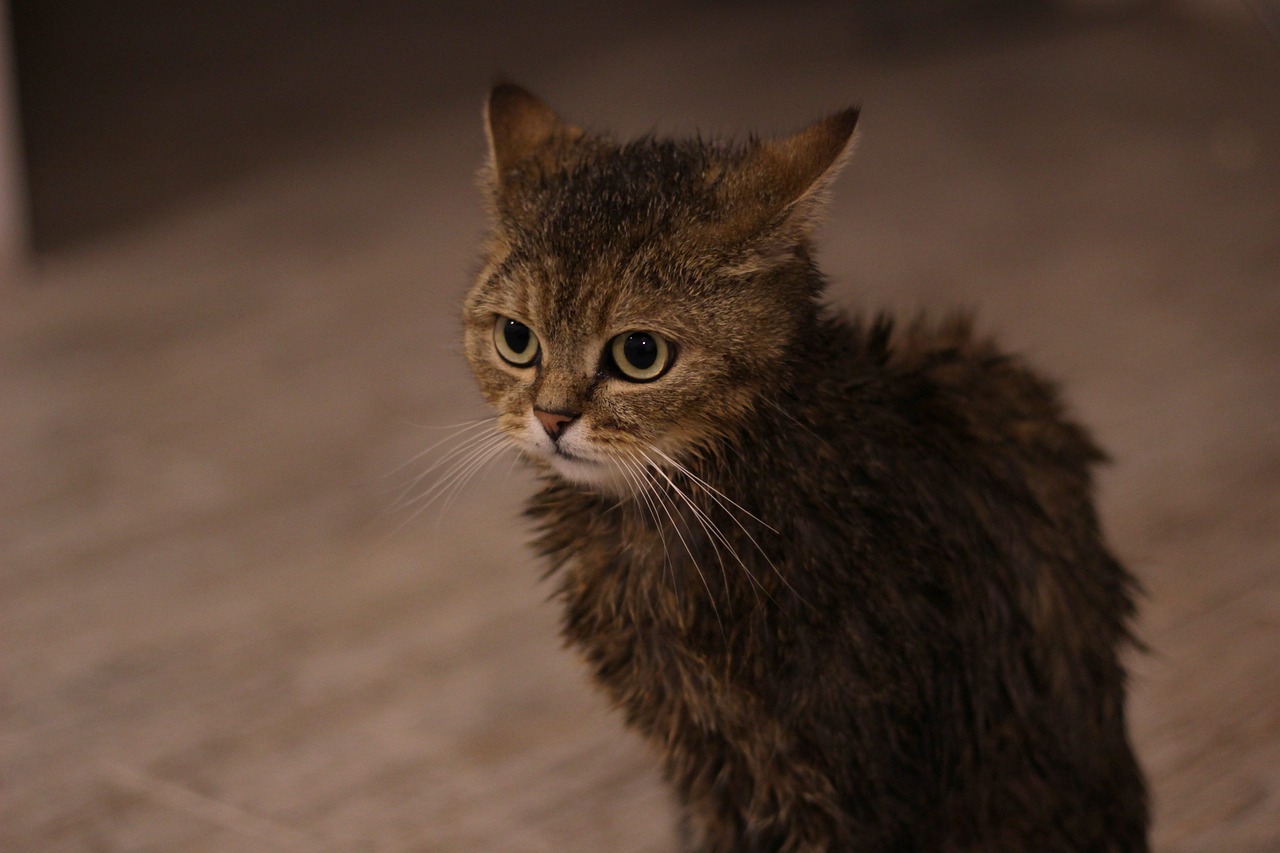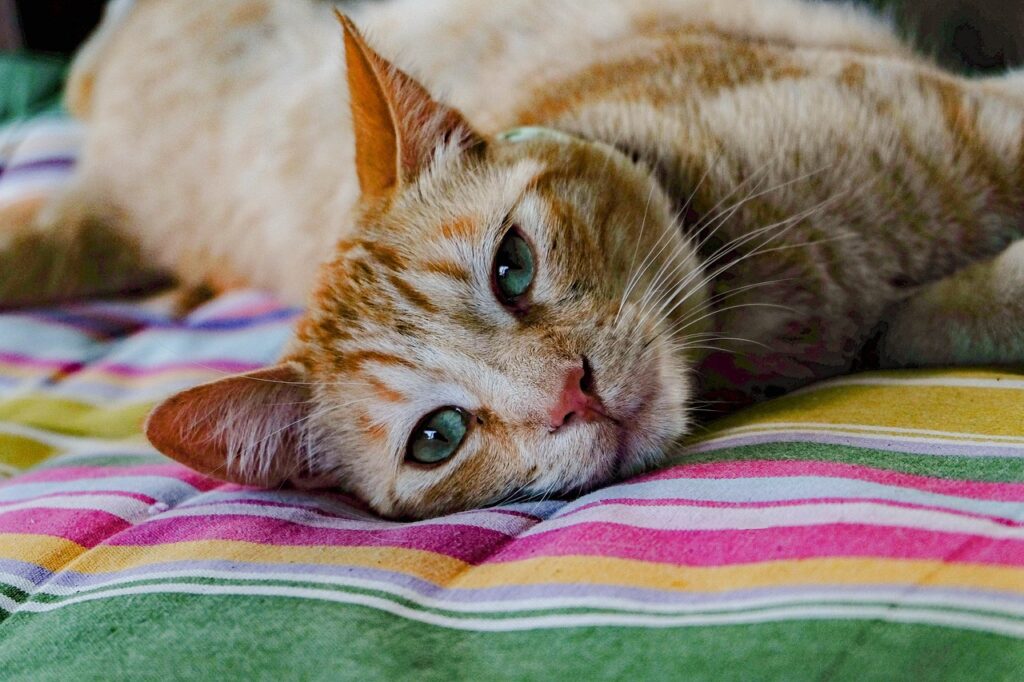If your cat has dandruff, you should know the reasons for cat dry skin. The flakes might sometimes indicate a sickness, but they are usually caused by nutrition or over-bathing problems. Learn what you can do to support your kitty.
Table of Contents
What Are The Symptoms Of Dry Skin In Cats?
The symptoms of dry skin on cats include
• The appearance of White dandruff-like flakes in their fur
• Scratching at itchy areas.
• Noticing a diminished shine to your cat’s fur.
“They will have what looks like dandruff in their fur,” notes Dr. Osborne. “Your dog or cat may also be scratching themselves or have a dull-looking coat.”
Dry Skin In Cats: Causes And Treatments
Skin issues in cats may be straightforward to identify, but their underlying causes are more difficult to find. Several factors may contribute to exfoliative dermatitis symptoms in cats, according to PetMD:
• Nutrition deficiency
• Bacterial or parasitic infections
• Changes in Hormonal
• Weak immunity
• Diabetes
• Old age
Though some people think of dry skin as a simple issue to treat, it is recommended to consult a veterinarian first who may be able to identify any trigger factors.

A Cat’s Dry Skin Could Be Caused By Nutritional Deficiencies.
Dry skin in cats is frequently caused by malnutrition. When felines don’t get their nutrients, vitamins, and minerals in the correct proportions, it’s the first thing to go. Unbalanced food can cause a lack of essential fatty acids, especially Omega-3s. These acids contribute to overall cellular health and are part of the building blocks that make up your cat’s fur.
Frequent Bathing Is One Of The Most Common Cause Of Dry Skin In Cats
Although many cats never have a water bath in their lives, some do. This is especially true for long-haired cats and those who suffer from recurring flea infestations. Shampooing is beneficial and necessary in certain cases, but it can also strip the natural oils from your cat’s coat. When baths are taken too frequently, the skin does not have enough time to recover its correct balance, resulting in flaking and loss of fur.
Diseases That Cause Dry Skin
Certain diseases can also throw your cat’s system out of balance.
Thyroid Disease
Hypothyroidism is frequently linked to skin issues, especially hair loss and sensitivity. Thyroid problems can also cause hormonal imbalances that have an impact on a cat’s overall health, including his skin health.
Kidney Disease
Kidneys that are not functioning properly allow a variety of pollutants to accumulate in your cat’s circulation. The liver works hard to eliminate as many more pollutants as it can, but some of them remain in her system.
Heart Disease
Although you might find it hard to imagine that your cat’s skin can be affected by heart disease, poor circulation causes less nourishing oxygen to reach his or her scalp. This increases cellular death and flaking.
Allergies
When your cat’s allergy to food, air pollutants, inhalants, and parasites such as fleas manifests itself in the skin, it means that he or she has an allergy. The skin of your cat suffers when it is continuously scratched. You may offer comfort by using anti-itch shampoos and sprays, but these products tend to remove the skin’s essential oils.
How To Get Rid Of Dry Skin On Your Cats
So, how can you alleviate or prevent dry cat skin problems? A three-pronged strategy is used.
Ensure Proper Nutrition
Despite what many cat lovers may think, treating dry feline skin starts with the inside out. Before you go out and buy the newest grooming products that promise to restore your cat’s skin and fur to their gleaming glory, make sure there aren’t any nutritional gaps. The following are Vetinfo.com’s recommendations:
• If you’re still unsure about what to feed your cat, compare it to other high-quality brands. Is it fresh enough? Does it contain adequate amounts of Omega-3 fatty acids? If your cat isn’t getting the nutrients it needs from its current brand of food, consider switching to a more nutritionally complete variety.
• Every other day, supplement your cat’s current diet with 1/8 of a teaspoon of fresh fish oil.
• Every week, offer your cat a small portion of fresh salmon. It’s high in vitamins that promote healthy skin and coat development.
Practice Care Of Grooming
Grooming habits can help your cat’s skin and fur look better.
• Brush your cat’s teeth at least once a day. It also promotes circulation in your pet’s skin and distributes natural oils to the whole scalp and coat. It also removes old fur, avoiding it from tangling with the new hair that is emerging. Your cat’s skin suffocates as a result of these mats.
• Use Shampoo that is of good quality. Only use shampoos that include moisturizers if you must, and make sure to finish with a cream rinse to help retain your cat’s natural oils.
• Mist your cat. You may use a light concentration of bath oil with water to offer your cat’s dry skin an immediate cure. Avon’s Skin So Soft is an excellent option for this type of therapy. When mixed with eight ounces of water, one teaspoon of oil is enough to lightly spray her whole coat. However, avoid getting it in her eyes by mixing it with water first. After that, brush the coat to distribute the oil down to the scalp. This is an excellent remedy when used in tandem with a healthy diet.
Regular Veterinary Care Is Essential
Taking your cat for a bi-annual check-up allows the doctor to discover diseases and infestations early before they have the opportunity to cause harm. Consider it like regular vehicle maintenance. The engine runs smoothly when you inspect the components for wear and tear. Your cat’s body may also be said to operate in this manner. However, the American Society for the Prevention of Cruelty to Animals (ASPCA) advises that if your cat’s skin appears abnormal, you should visit a veterinarian as soon as possible. Early detection is frequently credited with a quicker recovery if your cat has a more serious underlying condition.

